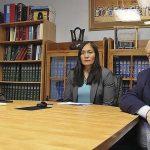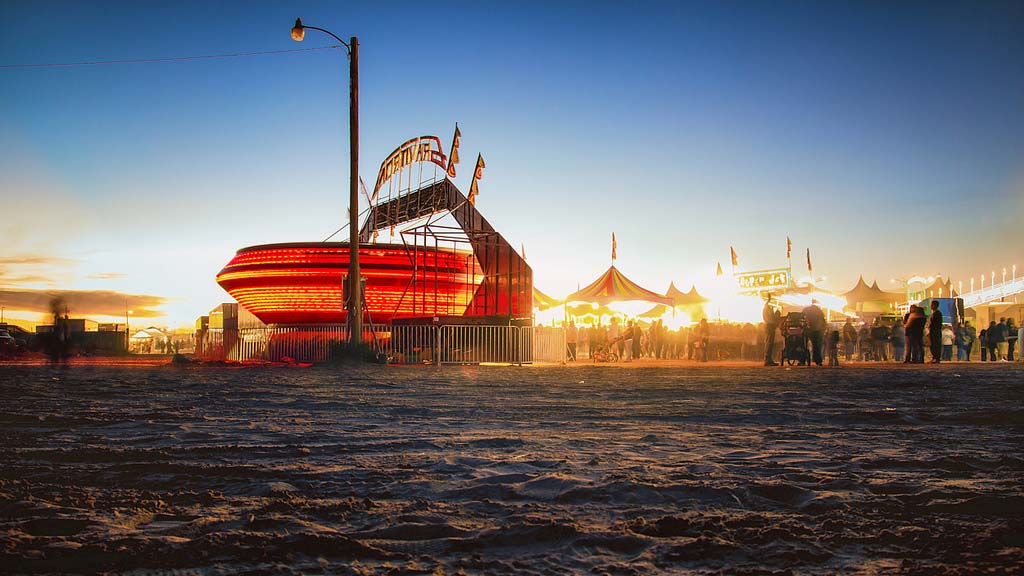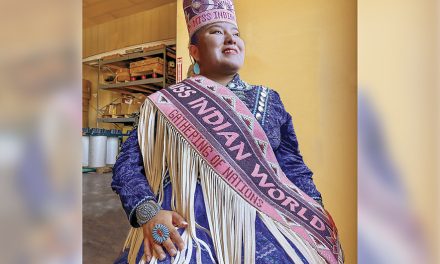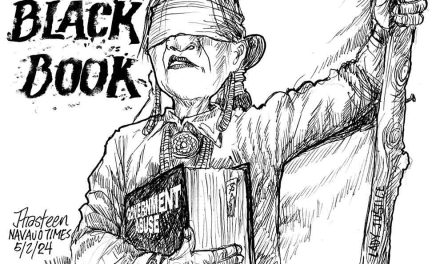
50 Years Ago: Carnival fails to show, ramadas benefit

Western Navajo Fair grounds.
The Tuba City Fair was held last weekend and it was a success, even though the carnival did not show up for some reason, said Stan Bartos, who covered the fair for the Navajo Times that year.
“The failure of the carnival to show up turned out to be a blessing rather than a misfortune,” he wrote. “Thousands of local dollars which would have disappeared down the road were kept at home where they were needed. The concession stands of local individuals and groups, even though rustic, were clean, efficiently run with reasonable prices.
“The homemade ramadas, built from nothing but guts, cooperation and determination, stood as a monument to true community spirit,” he added. “This fair showed that people could have fun without tinsel,” he said. “Build more ramadas. Tin buildings would destroy the harmony and congruity of the fair. Remember, any community can have a carnival or a facsimile of a county fair. Few communities can have something different – a true Indian fair.”
John Lange, from Park City, Utah, told the Times that he was still upset that the U.S. Post Office refused to issue a commemorative stamp honoring the tribe’s 100th birthday. Tribal officials had made a request in the beginning of 1968 but it was turned down because postal officials said it did not hold enough significance. But Lange pointed out that just this week the post office issued a commemorative stamp honoring the Cherokee Strip, which was celebrating its 75th anniversary.
Lange said it seemed to him that a certain high-ranking government officials apparently didn’t wield as much power as he thought they did. He was probably referring here to U.S. Sen. Barry Goldwater, who also asked the post office to issue the stamp on behalf of the Navajos. The Times reported that something unique was going on at Gallup High School.
Alan Wilson, a linguist at the school, was offering, for the first time, a course in Navajo culture that would be taught totally in the Navajo language. Wilson, who would go on to write a half dozen books on Navajo language terminology, was one of the few non-Navajos outside of Indian traders who were fluent in the Navajo language and he would use his knowledge to benefit the school district.
The school was promoting the class as the only one of its kind – teaching a course totally in a Native language – in any public school in the United States. Wilson said he was fluent in seven languages, including Navajo and Chinese, and said that it was because of his interest in the Chinese language that made him interested in learning Navajo.
In an interview published in the Navajo Times in the 1980s, Wilson said that he had visited a number of Chinese villages over the years and in the northern provinces of China he came across a dialect that had many words similar to those used by Navajos. This convinced him that the ancestors of the Navajos may have come from that area of China and may have traveled east through Russia and crossed the Bering Straight to what is now Alaska. One band would then travel east into Canada while another would go south and east and settled in the United States, he said.
And finally, it seems that Robert Roessel, president of Navajo Community College, may start yet another debate about selling alcohol on the Navajo Reservation. Roessel had been given the responsibility of raising funds for the new school and he is now trying to get enough money to build a campus in Tsaile. To help, Roessel has asked the Navajo Tribal Council for $200,000 toward construction of administration buildings.
In an interview published in the Albuquerque Tribune, Roessel raised the idea of the tribe legalizing liquor on the reservation and setting up its own package liquor stores on the reservation. According to Roessel, Navajos spend between $3 million and $4 million annually on liquor they purchase in border communities.
If they were able to buy it on the reservation, the tribe could use the profits to benefit the college. He pointed out that Congress passed a law in 1953 that gave tribes the right to decide whether they would allow liquor on their reservations. By 1968, Roessel said, about 55 of the nation’s 200 reservations now allow liquor sales.
The issue, however, continues to be controversial on the Navajo Reservation to the point where no political official has ever come out in support of allowing liquor sales on the reservation. Supporters of liquor sales continue to argue that tribally run liquor stores would allow more control of the problem and would reduce alcohol-related vehicle crashes. But these supporters were believed to be in the minority and tribal leaders continued to argue that a referendum of Navajo voters would strongly vote against legalization.
To read the full article, pick up your copy of the Navajo Times at your nearest newsstand Thursday mornings!
Are you a digital subscriber? Read the most recent three weeks of stories by logging in to your online account.








 Highway 264,
Highway 264, I-40, WB @ Winslow
I-40, WB @ Winslow